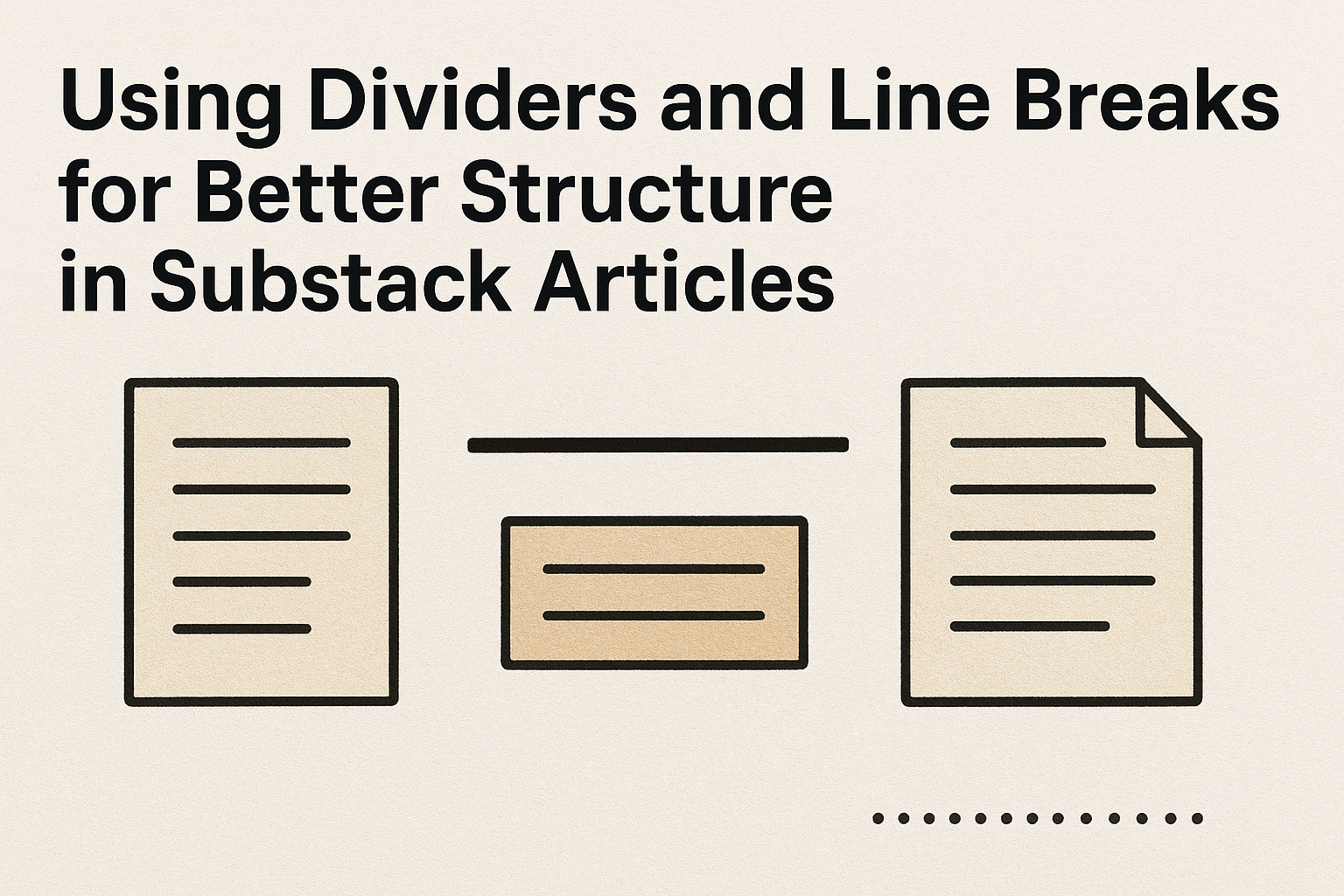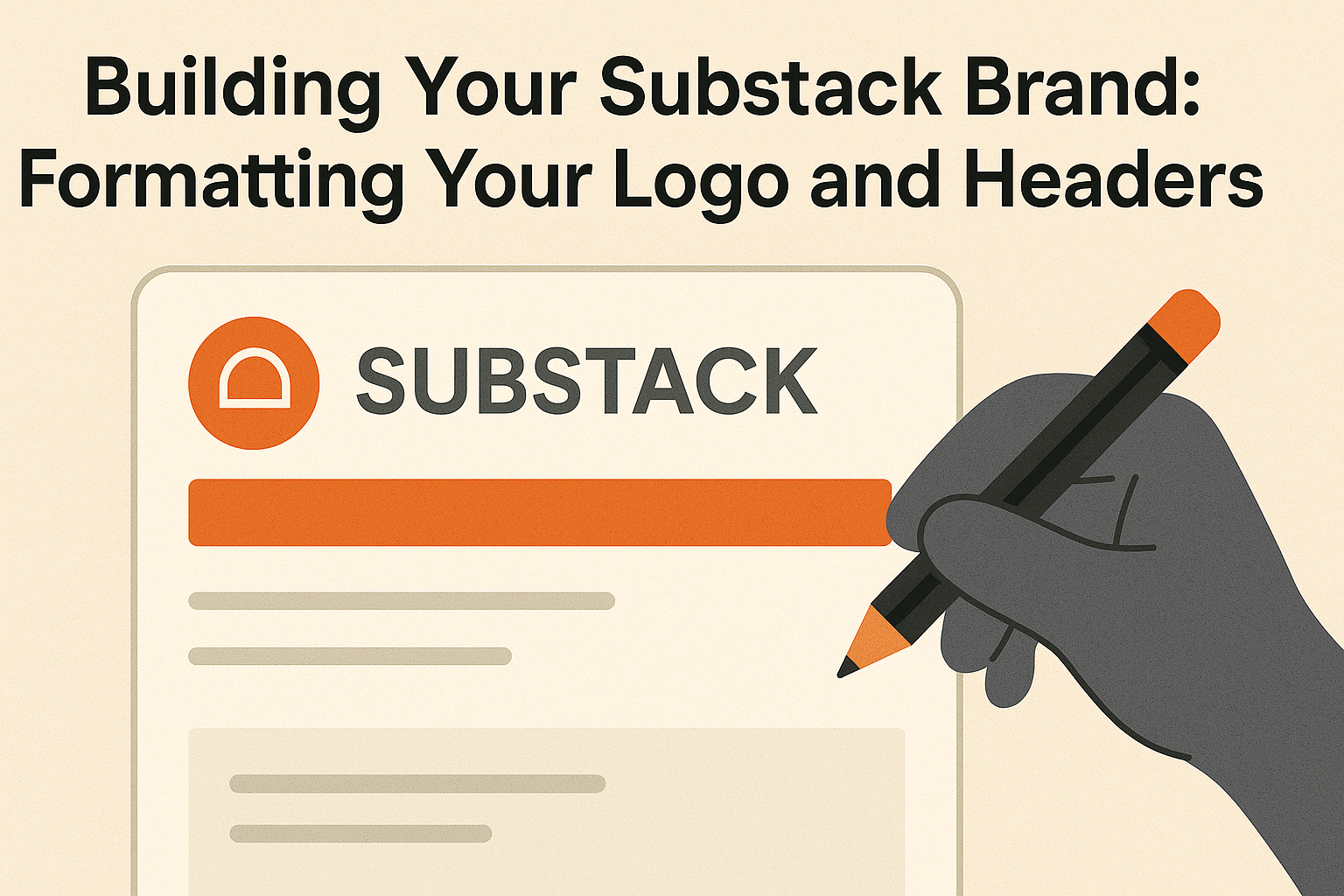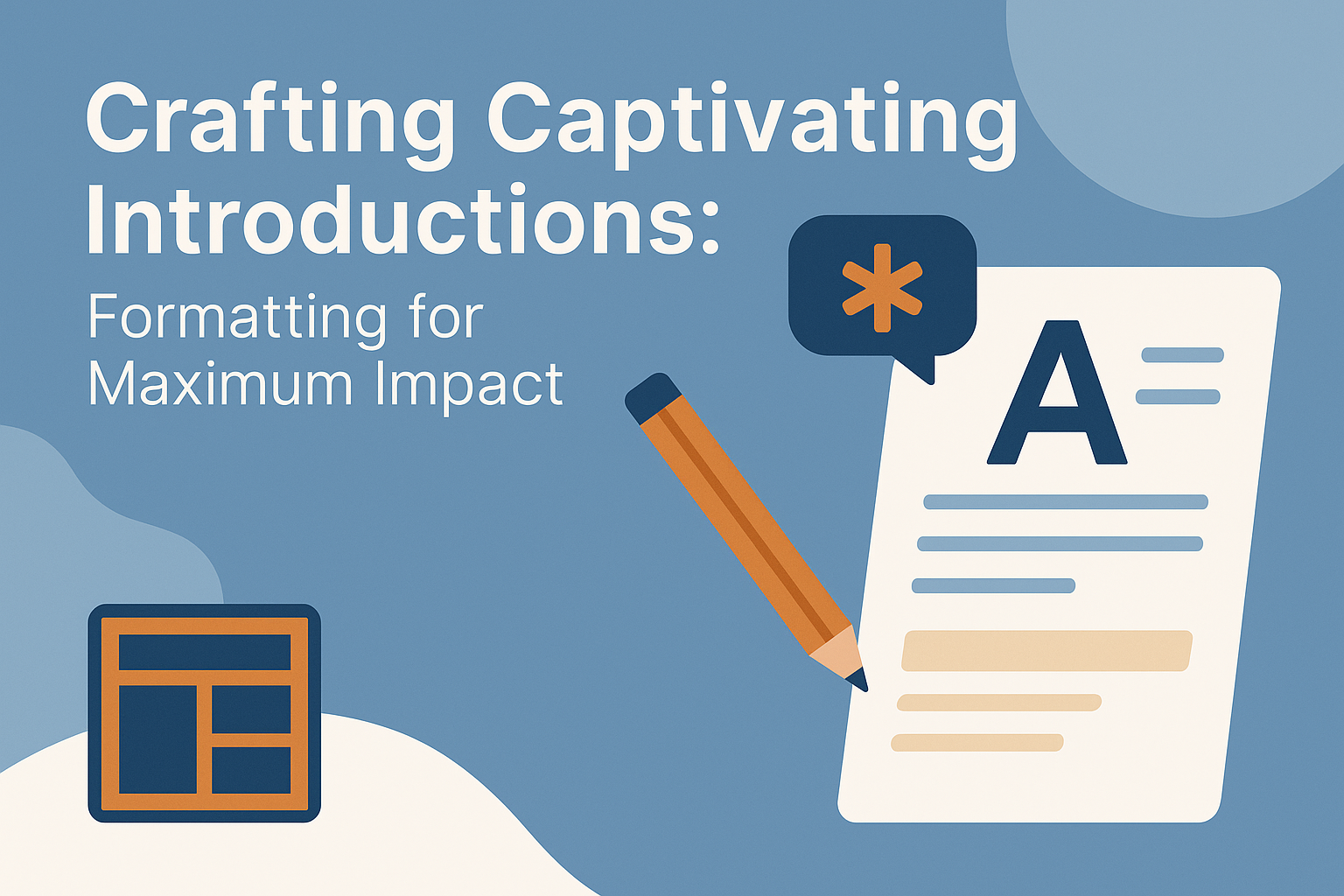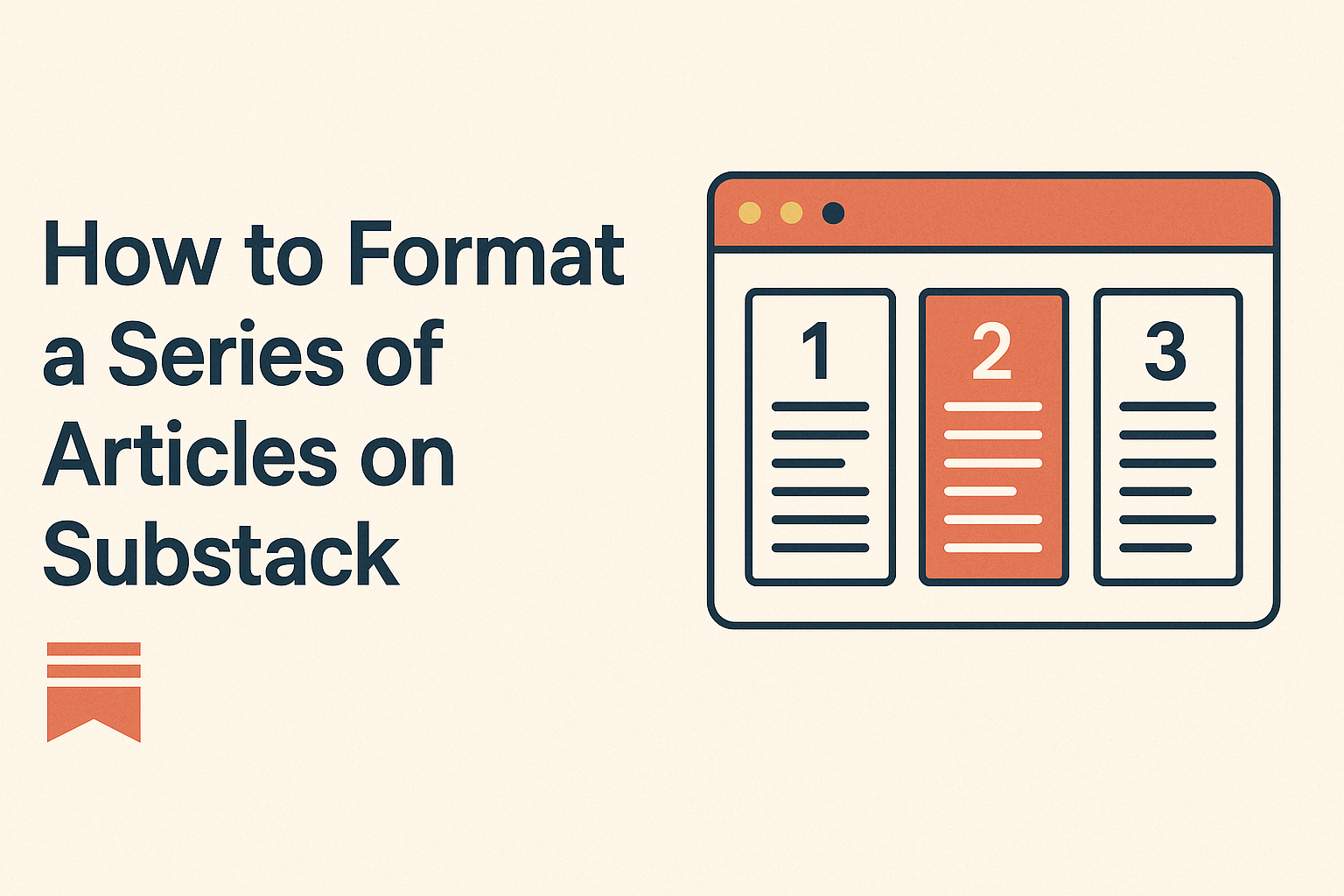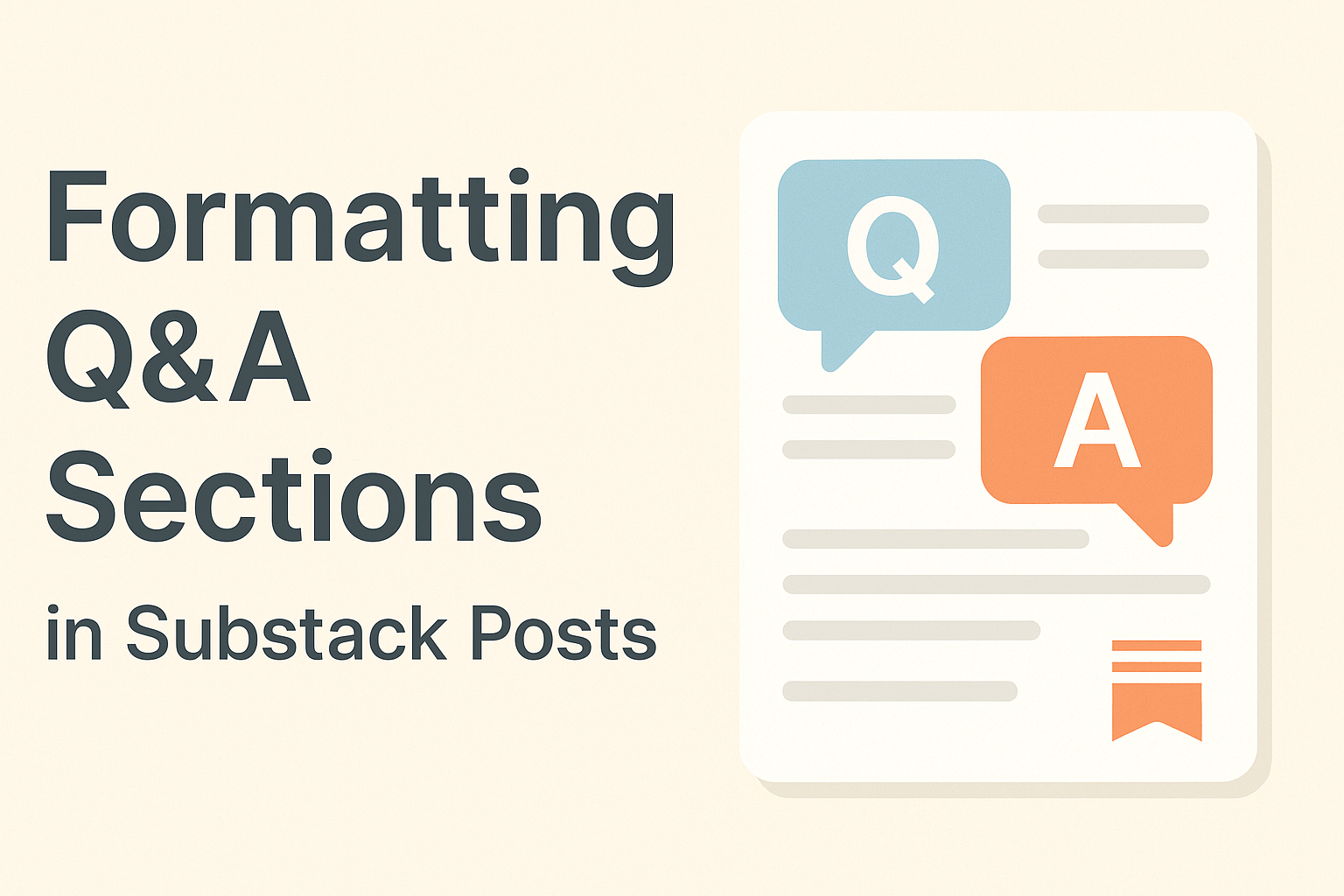Crafting engaging Substack articles can seem daunting, but using simple tools like dividers and line breaks can make a big difference. These tools help organize the text, making it easier for readers to digest information. By strategically placing dividers and line breaks, writers can create a more inviting and readable structure. Dividers act as visual …
Creating a distinctive brand on Substack is crucial for making your publication stand out. A well-designed logo and header are key elements that help readers quickly recognize and connect with your content. These visual aspects of your brand can turn casual visitors into loyal subscribers by establishing a memorable and professional presence. A logo isn’t …
Crafting captivating introductions is crucial for engaging readers from the first line. A strong introduction captures attention, sets the tone, and clearly presents the purpose of the writing. It’s important to start with an intriguing hook, such as a surprising fact or a thought-provoking question. An effective introduction also provides context, helping readers understand the …
Aligning text and images in Substack can greatly impact the visual appeal and effectiveness of a newsletter. When done correctly, it enhances readability and ensures that the message is clear to the reader. Key to mastering this is maintaining balance—neither text nor images should dominate the space. Proper alignment involves knowing the tools provided by …
Creating data-heavy posts on Substack can be a challenge, especially if readers find the information overwhelming. Using tables and charts is an effective way to organize large amounts of data in a visually appealing and easy-to-read manner. Visual tools like tables and charts turn complex data into digestible bites, enhancing the reader’s comprehension and engagement. …
Creating a seamless reading experience is key to keeping your audience engaged on platforms like Substack. Writers can organize their content effectively to ensure readers can easily navigate through their articles. Utilizing features like tags and organizing the navigation bar can make series of articles accessible and reader-friendly. Tags act like virtual groupings, letting writers …
Creating a clear and easy-to-follow Q&A section in Substack posts can greatly enhance readers’ experience. Readers appreciate when questions and answers are formatted in an engaging way, making it easier to digest information. To achieve clarity, it’s important to use simple headings, maintain consistent spacing, and highlight key points. Effective formatting involves using lists or …
In an age where attention spans are shrinking, keeping readers engaged is more important than ever. Crafting effective short paragraphs is key to maintaining reader interest in long-form content. This technique helps break down complex information into digestible chunks, making it easier for readers to follow along. Short paragraphs can transform a lengthy article from …
Bulleted and numbered lists are great tools for breaking down complex ideas into easy-to-understand chunks. They improve readability by organizing information clearly, making it easier for readers to grasp the main points. By using lists, writers can effectively highlight key details and draw focus to important aspects of the content. Besides making content more digestible, …
In the world of writing, the choice of font can greatly impact the reader’s experience. Selecting the right font for Substack articles is crucial for creating a professional and engaging visual identity. A well-chosen font not only makes an article more aesthetically pleasing but also enhances readability and keeps readers engaged. Typography isn’t just about …

